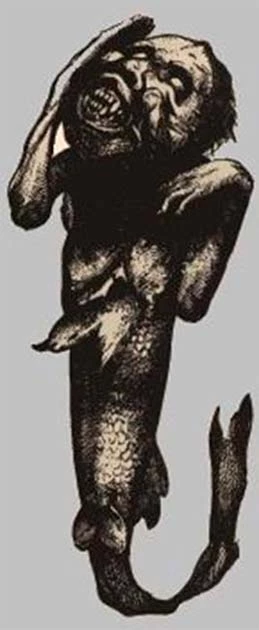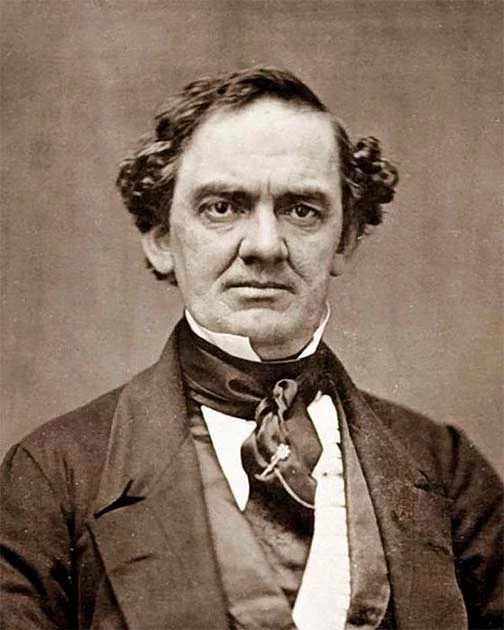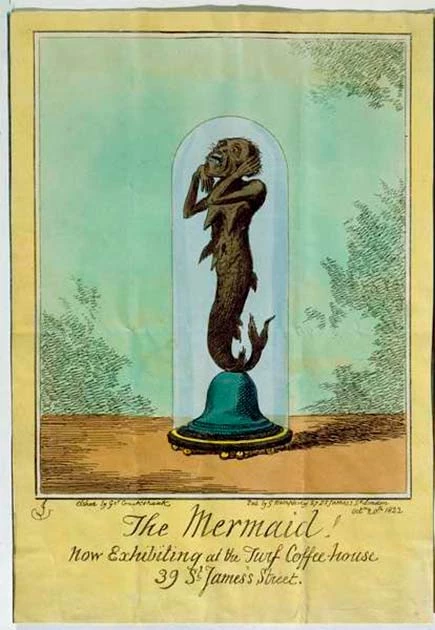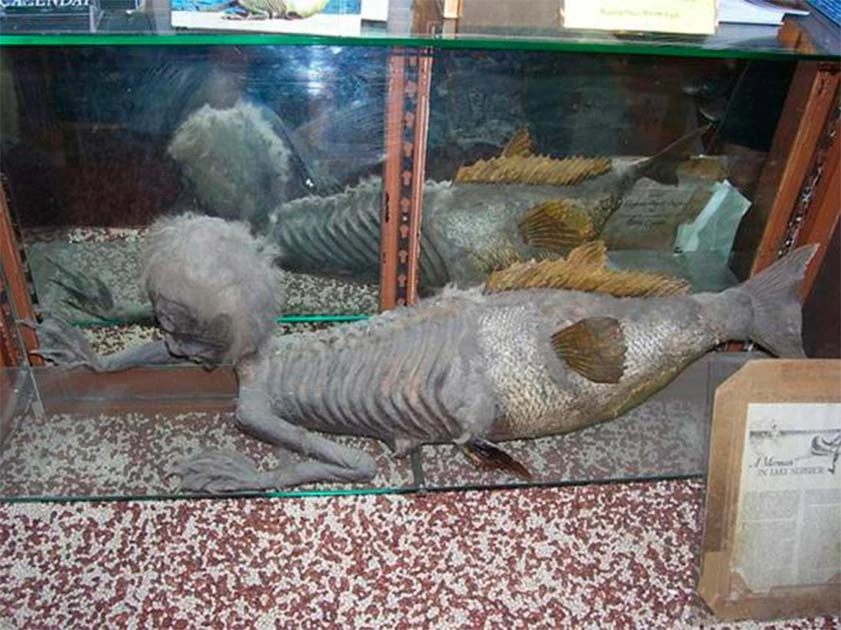Often written as ‘Feejee,’ the Fiji mermaid became a widely recognized sideshow attraction in the 1800s. The inaugural exhibition of the Fiji Mermaid was put on by P.T. Barnum, a renowned showman and entrepreneur, at Barnum’s American Museum, New York, in 1842. The exhibit drew crowds of intrigued spectators, cementing its popularity and paving the way for more displays of Fiji mermaids throughout the United States.
It is often said that Barnum’s mermaid met its demise in the fire that consumed Barnum’s museum in 1865. However, during the fire, it is believed to have been exhibited at Kimball’s Boston Museum, where it is thought to have been destroyed by another fire in the early 1880s. Despite these reports, there are still claims that the mermaid survived one or both fires and continues to be exhibited to this day.
How Did the Fiji Mermaid Arrive in the United States?
The Fiji mermaid first arrived in America in July 1842, brought by an Englishman named ‘Dr. J. Griffin,’ (a pseudonym for Levi Lyman, a colleague of Barnum’s) and purported to be a member of the ‘British Lyceum of Natural History.’ Dr. Griffin claimed that the mermaid was caught near the Fiji Islands in the South Pacific.
- Hunting for Mermaids: The Truth Behind the Myth
- The Selkie: The Woman From The Sea and How To Win Her Love
Upon hearing about Griffin’s arrival and the peculiar creature he had brought with him, the press showed up at Griffin’s hotel, demanding a glimpse of the mermaid. Once they saw the creature, they were convinced of its authenticity.

Subsequent to this, P. T. Barnum visited several New York newspaper offices to tell them about his unsuccessful attempts to persuade Griffin to exhibit the mermaid at his museum. Barnum revealed he had prepared an advertisement for the exhibition in advance, but since Griffin had refused, it was of no use. He handed over the advertisement, featuring the image of a typical European mermaid, to the newspapers, which published it. Furthermore, it is reported that Barnum distributed 10,000 pamphlets featuring enticing mermaid illustrations around the city.
Publicity and the Mermaid’s Grand Exhibition
All this turned out to be an elaborate marketing scheme that led to Griffin’s Fiji mermaid becoming the talk of the town. Eventually, Griffin decided to display his mermaid for a week at Concert Hall on Broadway. This exhibition was highly successful, leading Griffin to extend the display of the mermaid in New York. It was decided that the mermaid would be exhibited in Barnum’s American Museum for a month. Griffin also gave lectures to the crowds that came to see the mermaid.

However, what the visitors saw wasn’t the stunning, topless mermaids depicted in Barnum’s promotional material. Instead, they were met with a grotesque creature. It was later revealed that the Fiji mermaid was actually the upper body of a young monkey sewn onto the lower half of a fish.
Interestingly, Barnum was not the creator of the Fiji mermaid, and it’s known that such objects were made in Asia (Japan and the East Indies) long before Barnum showcased his so-called mermaid. But, as with so many of his exhibits, the great showman knew a money spinner when he saw one.
Behind the Mermaid’s Creation
The notorious Fiji mermaid is believed to have been crafted in Japan around 1810, a practice reportedly common among fishermen. The mermaid purchased by Barnum was bought by Dutch traders and then sold to an American sea captain named Samuel Barrett Eades in 1822. Eades spent a large sum of money on the mermaid, but was unable to recoup his investment by exhibiting it. After his death, Eades’ son sold the mermaid to Moses Kimball, who subsequently leased it to Barnum.

The Journey and Loss of the Fiji Mermaid
Once the mermaid had finished its month-long stint in Barnum’s American Museum, it embarked on a Southern Tour. This tour was abruptly halted due to a dispute it ignited in South Carolina. Following this, the Fiji mermaid was alternately displayed at Barnum’s museum and Kimball’s in Boston over the next two decades. In 1859, the mermaid was exhibited in London, returning afterward to be displayed in Kimball’s Boston Museum, its last known location.

Some hold the belief that the Fiji mermaid was destroyed in the 1865 fire at Barnum’s museum. However, it has been noted that at that time, the mermaid would have been housed in Kimball’s museum. As such, an alternate theory proposes that the mermaid vanished in the early 1880s, when Kimball’s museum was also devastated by a fire.
- A Sea Cow and a Sea Ape? The Strange Discoveries of Georg Steller
- Military Marine Mammals: A History of Exploding Dolphins
Yet another theory suggests that the Fiji mermaid may have survived and ended up in Harvard’s Peabody Museum of Archaeology and Ethnology. While this museum does possess a Fiji mermaid, it’s unclear if it is the ‘original’ Fiji mermaid. There are other museums worldwide that display Fiji mermaids, perhaps a testament to the enduring fascination people have with this topic, despite their counterfeit nature.
Top image: [Top] Fiji Mermaid, in the Folklore section at the Haus der Natur (House of Nature), a natural history collection in Salzburg, Austria. (Curious Expeditions / CC BY-NC-SA 2.0 ) [Bottom] P.T. Barnums Feejee mermaid (Unknown Author / Public Domain)
By Wu Mingren